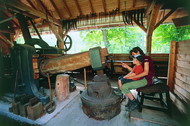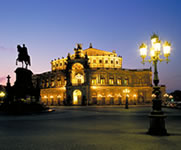Contact
Baiersbronn Touristik
Rosenplatz 3
72270 Baiersbronn
Email:
info@baiersbronn.de
Internet:
www.baiersbronn.de
Rosenplatz 3
72270 Baiersbronn
Email:
info@baiersbronn.de
Internet:
www.baiersbronn.de
Art & culture

Its exterior clad in wooden shingles, the Fairytale Museum in Oberdorf is dedicated to the life and works of Wilhelm Hauff (1802-1827). The bitter truth about the staggeringly hard life that the region's charcoal burners, raftsmen, lumberjacks and glassmakers were forced to lead, is revealed in his now-famous fairytale "Das kalte Herz" (The Cold Heart).An interactive section in museum has reading zones where you can read up on Hauff's ideas and inspirations, as well as audio and video stations. Younger children will feel at home in the active area, where they can paint, play and do handicrafts, and there is also a separate children's reading corner with fairytale books.
Immerse yourself in a long-forgotten past in the Vogtsbauernhof Open Air Museum. Customs and practices from all rural areas of the Black Forest are represented in this museum. Learn how the Black Forest farmers used to live and work – alongside the guided tours and special activity days, there are mills and sawmills as well as a host of imposing farm buildings from the 16th to the 19th century. The chimney-less kitchens still smell of the smoke from when their last fire went out, and have sausages and hams hanging down from the ceiling. Breeds of domestic pet kept at the time can be found in the barns, while cows, sheep, goats, pigs, geese and chickens mill around on the pastures. The architecture and working methods of each farmstead are representative of the region that it originated from, and they house corresponding exhibitions.
This compact museum is the first stop along the four kilometre-long discovery trail "in the valley of the hammers", which brings to life the history of mining and ore processing in the former "Royal Württemberg steelworks". Ore was being mined from the Forbach Valley as early as the mid-16th century, on the instruction of Duke Christoph. In 1761 the new steelworks were built in the parish of Baiersbronn, which was given the name of Friedrichstal Valley from 1808, in honour of King Friedrich of Württemberg. As well as chronicling iron smelting down the ages, the museum also showcases the range of products made by the renowned Swabian Steelworks along with a variety of historic forge hammers. In addition, the route also touches on other trades that were significant or beneficial to the running of the steelworks.
Travel Planner
Select an option...



